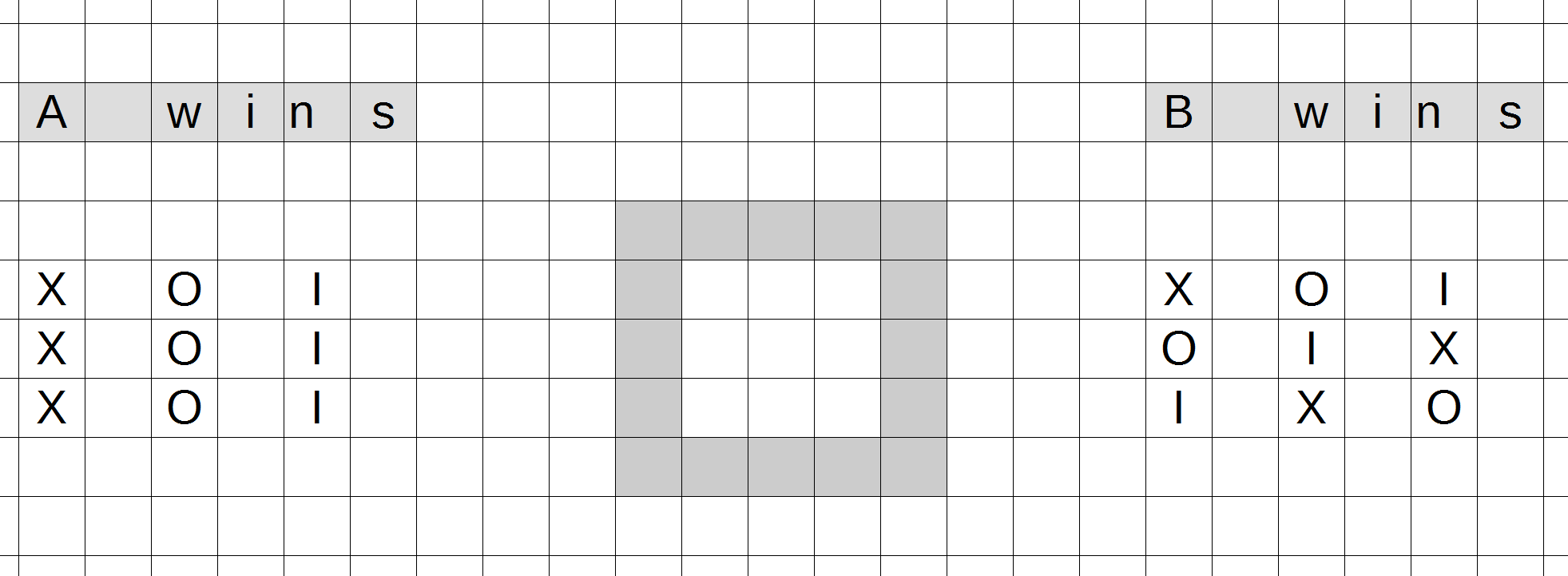We start with a usual $3 \times 3$ grid, $3$ different marks (say, $X, O, I$) and $2$ players.
Player $A$ has to make a vertical, horizontal or diagonal line made of $3$ identical marks (XXX, OOO or III).
Player $B$ has to make a vertical, horizontal or diagonal line made of $3$ different marks (XOI, OXI, XIO, IOX, IXO or OIX).
If both players have a 'winning' position on the last step, the game is a draw.
Below is an illustration (only some separate examples of winning lines are shown for $A$ and $B$, it's not a full list neither it's an example of a final board).
Which player has better chances at winning, if they go first? If the other goes first?
Which player has an easier time forcing a draw in each case?
Are the winning/draw strategies for Players $A$ and $B$ fundamentally different?

